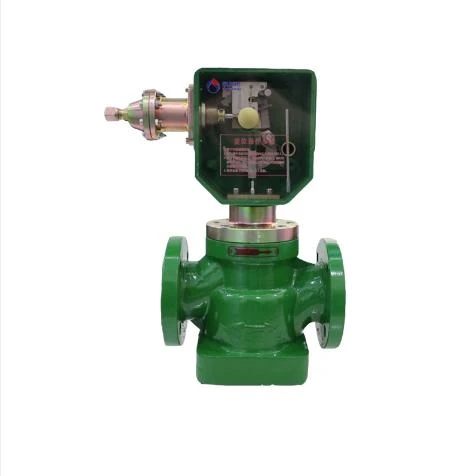
Dec . 24, 2024 04:24
Back to list
Understanding the Functionality and Applications of Pressure Reducing Regulators in Various Industries
Understanding Pressure Reducing Regulators Essential Components of Fluid Control Systems
In various industrial applications, maintaining optimal pressure levels is crucial for ensuring system efficiency, safety, and longevity. One key component in achieving this is the pressure-reducing regulator (PRR). This device plays a vital role in controlling pressure levels from a high-pressure source to a lower, controlled pressure suitable for specific applications.
What is a Pressure Reducing Regulator?
A pressure-reducing regulator is a mechanical device designed to reduce and control the pressure of gas or liquid flowing through a system. It receives fluid from a high-pressure source, such as a gas cylinder or a pipeline, and outputs it at a specified lower pressure. This process is essential not only for the protection of downstream equipment but also for maintaining the efficiency and stability of the entire system.
How Does a Pressure Reducing Regulator Work?
The operation of a pressure-reducing regulator relies on a mechanism of balancing forces. Typically, the device consists of three key components the inlet pressure port, the outlet pressure port, and the sensing element (usually a diaphragm or piston).
1. Inlet Pressure Port This is where the high-pressure fluid enters the regulator. The pressure can fluctuate based on the source, but the regulator is designed to handle a wide range of input pressures. 2. Outlet Pressure Port This port allows the regulated, lower-pressure fluid to exit the regulator and enter the downstream application.
3. Sensing Element The heart of the regulator is often the diaphragm or piston that reacts to the pressure changes within the system. When the outlet pressure rises above the setpoint, the sensing element moves to close the inlet flow, thereby reducing the output pressure. Conversely, if the outlet pressure drops below the desired level, the mechanism opens up to allow more fluid through.
Types of Pressure Reducing Regulators
There are several types of pressure-reducing regulators, each tailored for specific applications and requirements
pressure reducing regulators

1. Single-Stage Regulators These are designed for systems where the inlet pressure is relatively constant. They offer quick response times and are typically more compact.
2. Two-Stage Regulators Ideal for applications where inlet pressure can vary significantly, two-stage regulators provide a more stable outlet pressure by using two regulating mechanisms. The first stage reduces the pressure to an intermediate level, and the second stage fine-tunes it to the desired output pressure.
3. Back Pressure Regulators While traditional pressure-reducing regulators control outlet pressure, back pressure regulators are used to maintain a specified pressure upstream by relieving excess pressure when it exceeds a certain setpoint.
4. Electronic Pressure Regulators These innovative devices utilize sensors and electronic controls to regulate pressure with higher precision and adaptability, often suitable for complex systems where conditions may change rapidly.
Applications of Pressure Reducing Regulators
Pressure-reducing regulators are utilized across various industries
- Manufacturing Used in pneumatic systems to maintain a steady pressure in tools and equipment. - Healthcare Essential for devices like anesthesia machines and gas delivery systems, ensuring patient safety by maintaining precise flow rates and pressure. - Energy Production In natural gas pipelines, pressure-regulating stations control the flow of gas into distribution networks, ensuring safe and efficient delivery.
Conclusion
In summary, pressure-reducing regulators are indispensable components in managing fluid dynamics within a multitude of systems. Their ability to maintain consistent and safe pressure levels protects equipment, enhances operational efficiency, and ensures the safety of both the system and its operators. As technology evolves, so do these regulators, with new innovations aimed at increasing their reliability and precision. Understanding the role and functionality of pressure-reducing regulators is essential for anyone involved in fluid control systems, ensuring that processes run smoothly and securely in an increasingly demanding industrial landscape.
Next:
Latest news
-
Safety Valve Spring-Loaded Design Overpressure ProtectionNewsJul.25,2025
-
Precision Voltage Regulator AC5 Accuracy Grade PerformanceNewsJul.25,2025
-
Natural Gas Pressure Regulating Skid Industrial Pipeline ApplicationsNewsJul.25,2025
-
Natural Gas Filter Stainless Steel Mesh Element DesignNewsJul.25,2025
-
Gas Pressure Regulator Valve Direct-Acting Spring-Loaded DesignNewsJul.25,2025
-
Decompression Equipment Multi-Stage Heat Exchange System DesignNewsJul.25,2025

